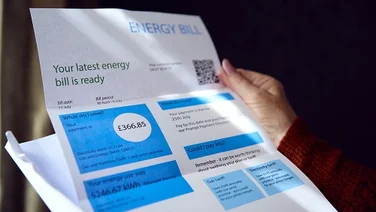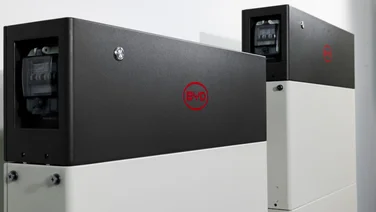After being postponed numerous times, the UK government’s long-awaited Heat and Buildings Strategy was released to the public in October 2021.
Part of a bid to hit the UK’s goal of producing net zero carbon emissions by 2050, this new strategy has outlined how both domestic and non-domestic properties across the country will reduce their emissions in the coming years.
This report couldn’t come soon enough, since roughly 14% of the UK’s total carbon emissions come from heating and powering our homes (Climate Change Committee, 2019). But what exactly is in the plan – and will it make a difference? Let’s find out.
What’s on this page?
What is the Heat and Buildings Strategy?
The Heat and Buildings Strategy is a government report, which was released in October 2021 and outlines how homes and businesses across the UK can reduce their emissions over the next few years.
The government has addressed various issues throughout the report, including fuel poverty, the poor insulation of UK properties, and the current cost of low-carbon heating.
As well as explaining how the changes will be introduced, the plan also notes how much they’ll cost, with funds totting up to £3.9 billion.
Why is there a Heat and Buildings Strategy?
The UK’s housing scene is in dire need of a makeover. Currently, around 19 million homes across the country – two-thirds of the UK’s total housing stock – are rated a D or below in their Energy Performance Certificate (EPC).
This issue isn’t specific to just one part of the UK, either. As you can see on the map below, there are no regions in England with even 50% of their housing stock rated C or above on their EPC.
Source: The Heat and Buildings Strategy, 2021
A large majority of UK properties are also heavily dependent on fossil fuels – with 85% of UK households being heated by natural gas.
Key points from the Heat and Buildings Strategy
Gas boilers will gradually be phased out
The government is aiming to phase out the installation of any new natural gas boilers from 2035 onwards. The strategy states that no one will be forced to remove their existing boilers, but whenever an old boiler goes kaput after 2035, homeowners will need to install an eco-friendly alternative.
As part of the plan, all new builds in England will be net zero from 2025 onwards – meaning they won’t rely on natural gas. Instead, these homes will be powered by a mix of low-carbon technologies, such as heat pumps, district heat networks, solar panels, and low-carbon hydrogen.
But phasing out natural gas will be no easy task – just take a look at how many homes rely on it in the chart below.
Source: The Heat and Buildings Strategy, 2021
Heat pumps and heat networks will replace gas
As gas boilers make their way out, they’ll be replaced by heat pumps and district heat networks.
Working together with industry, the government is aiming to deploy roughly 600,000 heat pumps each year by 2028. At this rate, the UK could replace around 1.7 million fossil fuel boilers per year by the mid-2030s.
Not every property will be suitable for heat pumps though, which is why the government is also considering district heat networks – systems of insulated pipes that take heat from a central source and deliver it to various buildings.
In the strategy, the government has pledged to invest £338 million between 2022-2025 towards the Heat Network Transformation Programme.
Low-carbon heating methods will become more affordable
The Heat and Buildings Strategy states that “heat pumps should be no more expensive to buy and run than existing boilers”, which is why the government is investing massively in the industry.
By doing this, heat pumps should become smaller, easier to install, and more affordable. The strategy even states that the cost of heat pumps will fall by at least 25-50% by 2025.
And as these low-carbon heating methods become more affordable, more UK homeowners will be able to use them as an alternative to gas boilers.
In the meantime, the government will support consumers financially through its Boiler Upgrade Scheme (previously called the Clean Heat Grant). Set to begin in April 2022, this scheme will provide homeowners in England and Wales with up to £5,000 off the cost of a new air source heat pump, and £6,000 off the price of a ground source heat pump.
Hydrogen will play an important role in the UK’s move away from fossil fuels
As the UK moves away from gas and oil, it will start using hydrogen to heat homes. The strategy states that the government will introduce hydrogen to the UK heating scene by 2026 – a move that will include making sure new natural gas boilers are ‘hydrogen-ready’ (meaning they’ll be able to use both gas and hydrogen).
The next few years will also see a number of large-scale hydrogen trials, which will consider whether whole towns or neighbourhoods can run on 100% hydrogen. The first of these tests will be a neighbourhood trial by 2023, followed by a village-scale trial by 2025.
There will be a fabric-first approach
Let’s get one thing straight: none of these alterations will be effective unless UK homes are properly insulated. Thankfully, the government’s plan involves a ‘fabric-first’ approach, which means there will be a key focus on upgrading the building itself before making changes to its heating system.
The government has committed to boosting as many homes as possible to an EPC rating of at least C by 2035 “where cost-effective, practical, and affordable”. To reduce fuel poverty, the government will move this date up to 2030 for fuel-poor properties.
(Editor’s note: this target has since been cancelled by Prime Minister Rishi Sunak, throwing the government’s entire plan to reduce domestic emissions into disarray.)
Who will be affected by the Heat and Buildings Strategy?
Most of the UK will be impacted by the Heat and Buildings Strategy. Since 85% of homes in England rely on gas, the majority of UK homeowners will need to find an alternative method of heating in the next few years.
A large percentage of the UK will also need to invest in better insulation in order to get an EPC rating of C before 2035. This will include installing loft insulation and wall insulation, replacing old windows, and even installing a new boiler.
How has the Heat and Buildings Strategy been received?
The strategy has certainly had mixed reviews. The general consensus is that, whilst it’s a step in the right direction, there are still some key details missing.
Many people have criticised the lack of clarity in parts of the report, particularly when it discusses retrofitting the nation’s properties. The strategy states that the government has plans for “upgrading as many homes as possible to achieve EPC band C by 2035”, but hasn’t included specific details on how this will be done.
In response, the chief executive of the Federation of Master Builders (FMB) Brian Berry said: “If there is no detail in the strategy on how we can address the megatonnes of carbon lost through the leaky walls and roofs of our homes, it will have failed, and the benefits of installing heat pumps risk being lost.”
When it comes to the Boiler Upgrade Scheme, many industry experts have welcomed the news, as it’ll encourage consumers to swap old boilers for heat pumps.
Keith Anderson, chief executive of ScottishPower, said: “Ready access to support grants will kick-start the demand for electric heating, allowing the industry to accelerate the delivery of electrification and quickly bring down upfront costs through innovation and supply chain growth.”
However, many experts are also criticising the Boiler Upgrade Scheme for not going far enough, with the Energy and Utilities Alliance claiming the funding was “insufficient for the scale of the challenge we face.”
Will the strategy help the UK reach net zero?
This new strategy has potential to gradually reduce UK emissions by encouraging more people to switch to low-carbon heating and better insulate their homes.
However, some have argued that the Heat and Buildings Strategy simply doesn’t go far enough – and we can vouch for that.
Although the government’s pledge of £3.9 billion for the Heat and Buildings Strategy sounds like a lot, it’s minuscule compared to the funding set aside for other projects.
A key example of this is the HS2 project (a new high-speed railway, which is destroying ecosystems across the country), which is estimated to have cost between £72 billion and £98 billion so far. Not to mention, the government has also spent £13.65 billion on subsidies for gas and oil firms since joining the Paris Agreement.
The Heat and Buildings Strategy has also come months after the government scrapped its £1.5 billion Green Homes Grant scheme.
So although there’s a lot to be hopeful about in this report, much more needs to be done if we’re going to reach net zero emissions by 2050.






